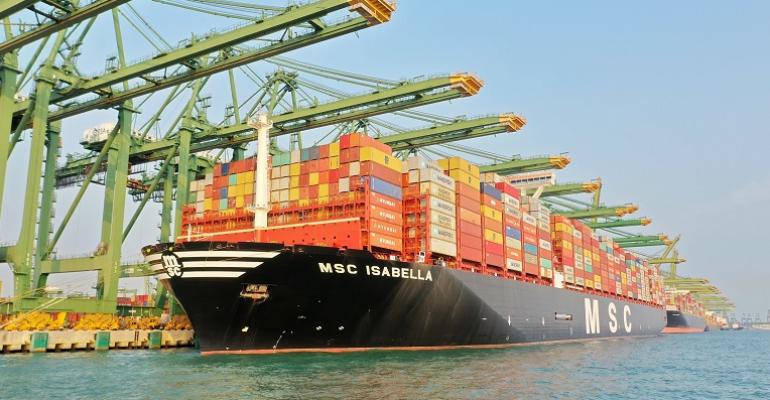The overall cost of installing the amine based CCUS is $8.92 million and is comprised of $7 million equipment costs, $1.85 million yard installation cost for up to 45 days work and $69,000 for the cost of the amine carbon absorbent chemical.
In total ZEME, which is a subsidiary of the state-owned Zhejiang Energy Group, calculates that the system will handle 24,000 tonnes of exhaust gas annually from the MSC ship removing some 40% of the carbon emitted following the scrubber processing.
According to ZEME the payback period for the CCUS will be around five years if the carbon tax reaches $150 per tonne, though its cost calculations estimate the price of carbon at $100 per tonne.
Energy use of the system amounts to 1,600kW, or 8% of the vessel’s auxiliary power, giving an operational cost for the system of $49.10 per tonne of CO2. Meanwhile, the cost in lost freight volume is considered to be $9.10 per tonne of CO2.
However, ZEME calculates that the sale of captured carbon will bring an income of $34.50 per tonne for the owner, offering an annual income of $828,000.
A similar calculation for a 318,000 dwt VLCC showed a total cost of installation of $5.65 million, $3.615 million for the equipment, $1.6 million installation costs and $35,000 for the amine.
In total the VLCC would earn $19.5 per tonne of CO2 and would bring an income of $195,000 annually, taking into account depreciation the operational costs and the cost of additional carbon emissions, assuming a carbon tax of $100 per tonne of CO2 and the sale price of captured carbon of $33/tonne.
“The unloading capacity and utilisation of captured CO2 will restrict the large-scale application of marine CCUS,” said ZEME.
CCUS development for marine applications is considered to be in its infancy with the storage space required and power output necessary meaning that large scale systems can be uneconomic for use at sea.
Value Maritime has developed a system called Filtree which saw its first installation in February this year on an Eastern Pacific Shipping tanker Pacific Cobalt.
Wärtsilä is another company developing a CCS system linked to its scrubber technology. The scrubber has an additional tower where exhaust gas is passed through an amine solution, which is mainly nitrogen, that strips the carbon gas from the exhaust.
Carbon rich amine is then reheated in an adjacent tower releasing the carbon, which is compressed and stored as liquid, while the lean amine solution is reused.
Using this method Wärtsilä believes it can strip 70% of carbon emissions from exhaust gases, more than enough to meet 2030 targets.
Meanwhile PMW Technology’s A3C system works by washing out sulphur oxides and cooling the washed gas. Then a second stage of cooling and separation of the carbon gas uses stainless steel beads to capture the gas. PMW says its system uses less energy and captures 99% of emissions, with a smaller equipment footprint, reducing the lost cargo space.
Copyright © 2024. All rights reserved. Seatrade, a trading name of Informa Markets (UK) Limited.
Add Seatrade Maritime News to your Google News feed.  |

